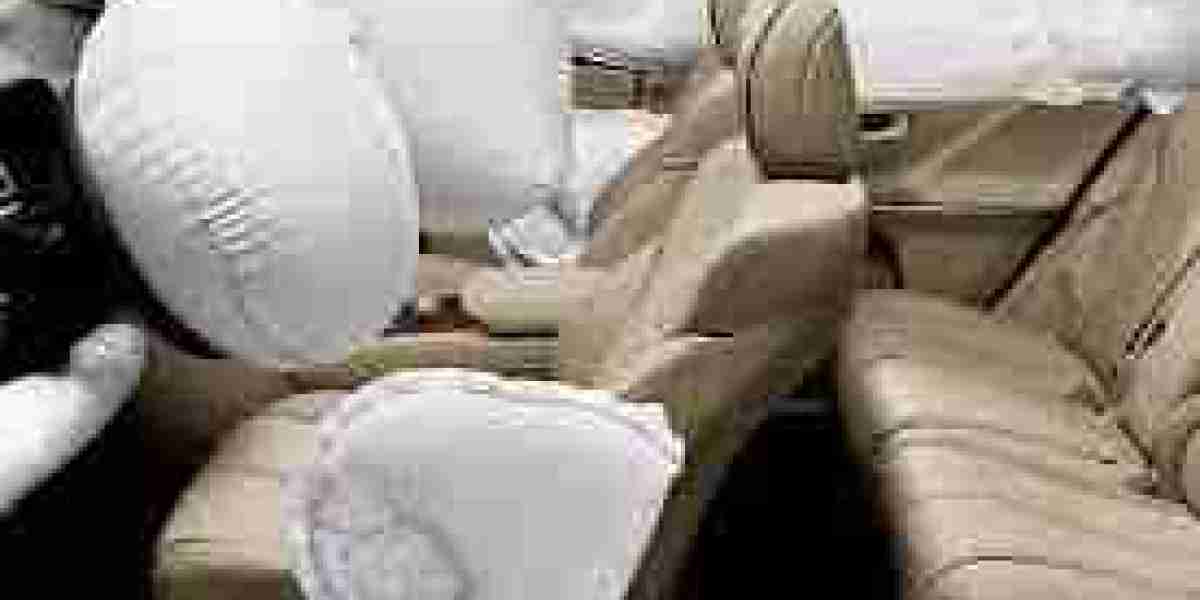The Automotive Airbag Market has long been a cornerstone of vehicle safety, dramatically reducing fatalities and injuries in collisions. Airbags, alongside seat belts, have become a standard safety feature globally due to stringent regulations and widespread consumer acceptance. However, the market now faces emerging threats from two significant fronts: increasing competition from alternative safety technologies and changing consumer preferences.
The Rise of Alternative Safety Technologies
The automotive industry is undergoing a transformative phase marked by the integration of advanced electronic safety systems and automated technologies. These innovations complement or, in some cases, challenge the role of conventional airbags as primary safety devices.
1. Advanced Driver Assistance Systems (ADAS):
ADAS technologies such as automatic emergency braking (AEB), lane-keeping assist, adaptive cruise control, and collision avoidance systems have become increasingly sophisticated and widely adopted. These systems actively work to prevent accidents from occurring rather than merely mitigating injury after a crash.
By reducing the likelihood and severity of collisions, ADAS technologies potentially decrease the dependence on passive safety systems like airbags. Automakers and consumers alike recognize the value of accident prevention, which could temper future airbag market growth.
2. Autonomous Vehicles and Smart Safety Solutions:
The development of autonomous and semi-autonomous vehicles represents a paradigm shift in automotive safety. Self-driving cars rely on a complex array of sensors, cameras, radar, and artificial intelligence to avoid collisions and ensure passenger safety.
In fully autonomous vehicles, the need for traditional airbags may diminish as the frequency of accidents is expected to decline drastically. Moreover, the interior design of autonomous vehicles might evolve away from forward-facing seats, which could necessitate a redesign or even a rethinking of airbag deployment strategies.
3. Pedestrian and Vulnerable Road User Protection Technologies:
Emerging safety technologies aimed at protecting pedestrians, cyclists, and other vulnerable road users—such as external airbags, automatic braking systems triggered by pedestrian detection, and active hood lifts—compete for investment and attention within the automotive safety budget.
As automakers allocate resources toward these innovative solutions, traditional airbag development might receive comparatively less focus, posing a competitive threat to the airbag market.
Changing Consumer Preferences and Expectations
Consumer attitudes toward vehicle safety and technology are evolving rapidly, influenced by broader societal trends, technological advancements, and heightened awareness of health and environmental factors.
1. Preference for Holistic Safety Ecosystems:
Modern consumers increasingly expect integrated safety ecosystems combining active and passive safety features. They prioritize technologies that prevent accidents over those that mitigate injury post-collision. This shift means that while airbags remain essential, they are now part of a broader suite of safety technologies rather than the sole focus.
Consumers also value features such as real-time hazard detection, vehicle-to-vehicle (V2V) communication, and emergency response services, which represent a more proactive approach to safety.
2. Demand for Smart and Personalized Safety Solutions:
With the rise of connected cars and digital lifestyles, consumers favor smart safety technologies that adapt to individual needs and contexts. For example, smart airbags that adjust deployment force based on occupant size, position, and crash severity appeal to buyers seeking customized protection.
Traditional airbags, often standardized and mechanical in nature, may be perceived as outdated compared to intelligent, sensor-driven systems. This perception challenges manufacturers to innovate rapidly to meet changing expectations.
3. Environmental and Sustainability Concerns:
Consumers are increasingly aware of environmental issues and seek eco-friendly products, including vehicles and their components. Lightweight materials, recyclable parts, and sustainable manufacturing processes influence purchasing decisions.
Airbag manufacturers face pressure to develop environmentally responsible products without compromising safety or cost. Failure to align with these preferences could lead consumers to favor vehicles with greener safety solutions.
Combined Threats and Market Implications
The convergence of alternative safety technologies and shifting consumer preferences creates a complex threat environment for the automotive airbag market.
Reduced Growth Opportunities: As ADAS and autonomous technologies gain market share, the relative importance of airbags as a differentiator diminishes. This reduction could slow the growth trajectory of the airbag segment, especially in mature markets.
Pressure on Innovation and Differentiation: Airbag manufacturers must accelerate innovation to stay relevant. Incorporating smart sensors, improving deployment algorithms, and integrating airbags with other vehicle safety systems become crucial.
Market Fragmentation and Competition: The airbag market faces increased competition not only from new entrants offering alternative safety solutions but also from existing automotive electronics companies expanding into airbag technology. This competition drives pricing pressures and necessitates strategic partnerships.
Strategies for Airbag Market Players to Address Threats
To navigate these threats and sustain growth, stakeholders in the automotive airbag market can pursue several strategic approaches:
1. Embrace Technological Integration:
Develop airbags that seamlessly integrate with ADAS and autonomous vehicle systems. For example, airbags can be designed to deploy differently based on data from collision avoidance sensors.
2. Innovate with Smart and Adaptive Airbags:
Invest in research to create airbags with adaptive deployment features tailored to occupant characteristics and crash dynamics, enhancing safety and consumer appeal.
3. Collaborate with Emerging Safety Technology Providers:
Form strategic alliances with companies specializing in ADAS, sensor technologies, and autonomous vehicle components to co-develop integrated safety solutions.
Conclusion
The automotive airbag market is at a crossroads, facing significant threats from the rapid advancement of alternative safety technologies and evolving consumer preferences. While airbags remain a fundamental safety feature, their role is being reshaped by accident prevention systems, autonomous driving innovations, and demands for smarter, personalized safety.




